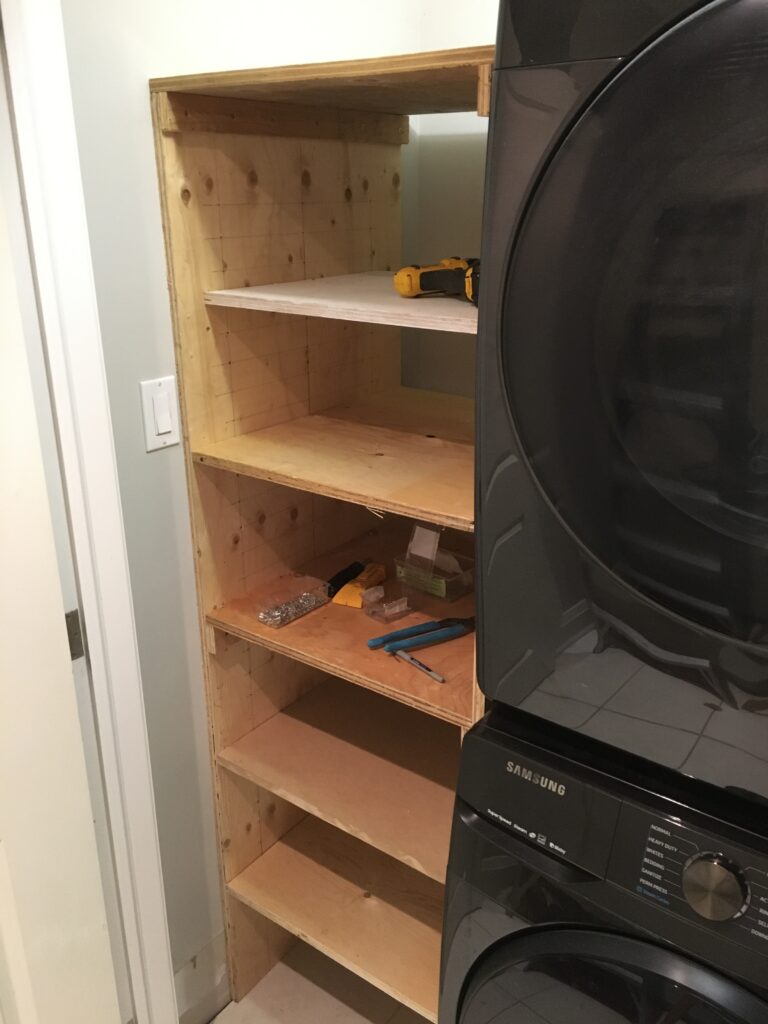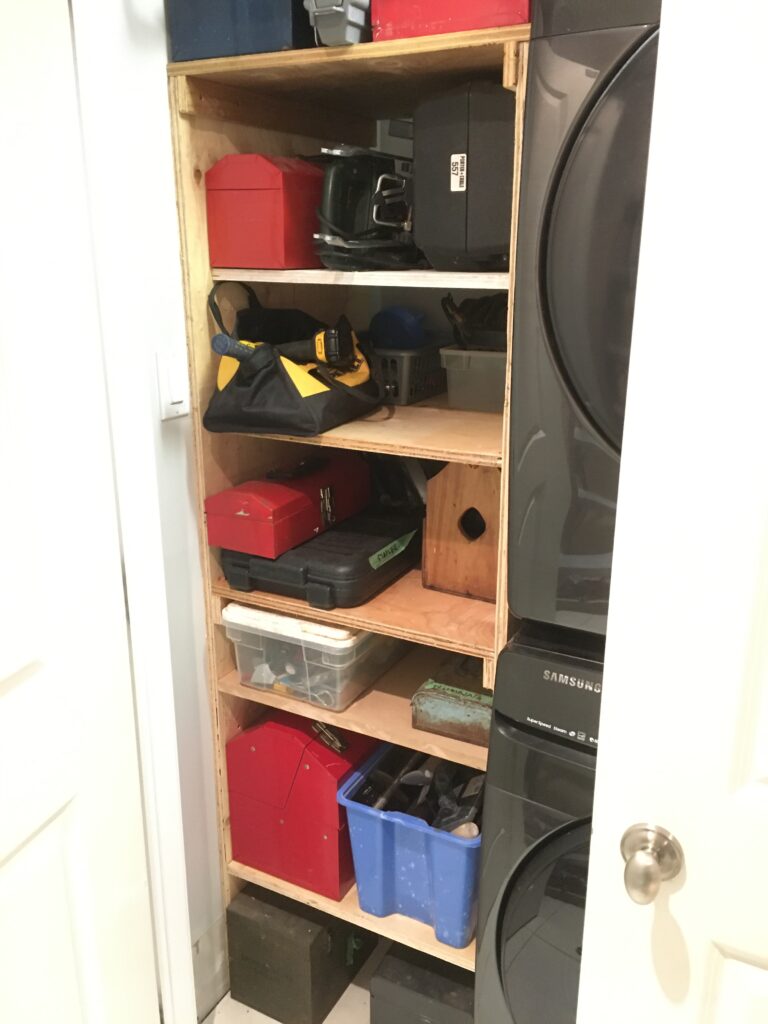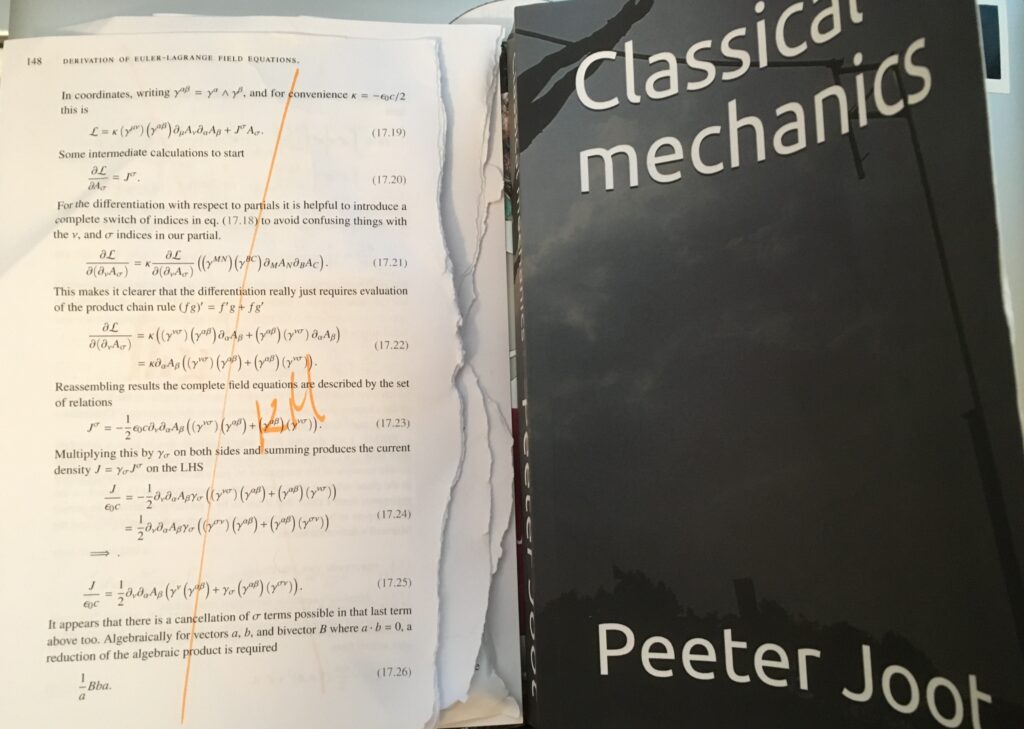[If mathjax doesn’t display properly for you, click here for a PDF of this post.]
I’ve just started reading [1], but already got distracted from the plot by a fun math fact. Namely, a cute formula for the nth term of a Fibonacci series. Recall
Definition 1.1: Fibonacci series.
\begin{equation*} F_n = F_{n-2} + F_{n-1}. \end{equation*}
We can quickly find that the series has values 0, 1, 1, 2, 3, 5, 8, 13, \cdots . What’s really cool, is that there’s a closed form expression for the nth term in the series that doesn’t require calculation of all the previous terms.
Theorem 1.1: Nth term of the Fibonacci series.
This is a rather miraculous and interesting looking equation. Other than the \sqrt{5} scale factor, this is exactly the difference of the nth powers of the golden ratio \phi = (1+\sqrt{5})/2 , and 1 – \phi = (1-\sqrt{5})/2 . That is:
\begin{equation}\label{eqn:fibonacci:60}
F_n = \frac{\phi^n – (1 -\phi)^n}{\sqrt{5}}.
\end{equation}
How on Earth would somebody figure this out? According to Tattersal [2], this relationship was discovered by Kepler.
Understanding this from the ground up looks like it’s a pretty deep rabbit hole to dive into. Let’s save that game for another day, but try the more pedestrian task of proving that this formula works.
Start proof:
\begin{equation}\label{eqn:fibonacci:80}
\begin{aligned}
\sqrt{5} F_n
&=
\sqrt{5} \lr{ F_{n-2} + F_{n-1} } \\
&=
\phi^{n-2} – \lr{ 1 – \phi}^{n-2}
+ \phi^{n-1} – \lr{ 1 – \phi}^{n-1} \\
&=
\phi^{n-2} \lr{ 1 + \phi }
-\lr{1 – \phi}^{n-2} \lr{ 1 + 1 – \phi } \\
&=
\phi^{n-2}
\frac{ 3 + \sqrt{5} }{2}
-\lr{1 – \phi}^{n-2}
\frac{ 3 – \sqrt{5} }{2}.
\end{aligned}
\end{equation}
However,
\begin{equation}\label{eqn:fibonacci:100}
\begin{aligned}
\phi^2
&= \lr{ \frac{ 1 + \sqrt{5} }{2} }^2 \\
&= \frac{ 1 + 2 \sqrt{5} + 5 }{4} \\
&= \frac{ 3 + \sqrt{5} }{2},
\end{aligned}
\end{equation}
and
\begin{equation}\label{eqn:fibonacci:120}
\begin{aligned}
(1-\phi)^2
&= \lr{ \frac{ 1 – \sqrt{5} }{2} }^2 \\
&= \frac{ 1 – 2 \sqrt{5} + 5 }{4} \\
&= \frac{ 3 – \sqrt{5} }{2},
\end{aligned}
\end{equation}
so
\begin{equation}\label{eqn:fibonacci:140}
\sqrt{5} F_n = \phi^n – (1-\phi)^n.
\end{equation}
End proof.
References
[1] Steven Strogatz and Don Joffray. The calculus of friendship: What a teacher and a student learned about life while corresponding about math. Princeton University Press, 2009.
[2] James J Tattersall. Elementary number theory in nine chapters. Cambridge University Press, 2005.





